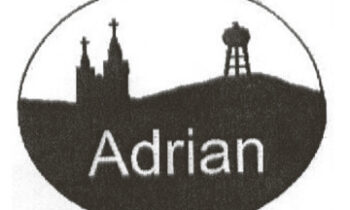By Deb Kroon
Review Staff Writer
Winter storm Ulmer was named on Monday afternoon, March 11, 2019. Weather experts were expecting that winter storm warnings would cover 248,500 square miles. It did not disappoint. Ulmer brought snow to parts of the Pacific Northwest, the mountains of California and the Four Corners region before heading eastward to the Rockies and the Plains.
About 50% of the time, weather predictions don’t pan out, they either predict too much or too little. With winter storm Ulmer, the weather service was right on the money. The storm was predicted to begin on Tuesday and be out of the area by Thursday evening, into Friday, depending on where you lived. They predicted blizzard conditions, rain or freezing rain, again depending on where you were located. On Tuesday evening, the cancellations and postponements began to pop up across the bottom of the TV screen. By Wednesday, blizzard conditions were reported from Colorado to North Dakota, with rain and freezing rain extending southward as far as Texas.
Ulmer went through the process of “bombogenesis” as it reached the Central Plains, March 12 and 13. Bombogensis is defined as a major drop in atmospheric pressure (24 millibars or more, Ulmer dropped 26 millibars) in 24 hours or less. It is a process that causes rapid intensification of a storm, usually seen in a hurricane, in this case a winter storm. Wind gusts over 80 miles an hour, accompanied by heavy snow were reported. Heavy rain, lightening, even tornadic activity was also reported. Ulma slowly weakened as it moved from Nebraska to the Great Lakes, leaving behind feet of snow and flooded creeks and rivers.
Here in Southwest MN and Northwest IA, we saw two to three inches of rain, with some snow before the storm moved out of the area. The rain, with no where to go, flooded yards, streets, basements, creeks and fields, anywhere that water could flow and pool. A flood watch was posted on Wednesday, March 13, and was left in effect until Saturday, March 16. Rain and melting snow pushed streams and rivers out of their banks. The high water levels threatened bridges, roads and, in Nebraska several dams, causing state, county and local officials to close sections of both highways and rural roads. Crews working to keep the roads clear, dug trenches to move the water away, and worked to unplug frozen storm sewers so water could drain.
Highway 75 was closed at 5 p.m. on Thursday from the Iowa State line north to Trosky, MN due to flooding in multiple areas along that route. Rock County advised no travel on gravel roads, unless you lived on the road, and some roads were closed. Nobles County strongly advises people to avoid gravel roads, or any road that has water running across it. The townships of Worthington, Lorain, Elk and Little Rock advised no travel on the township roads due to flooding and wash outs.
MnDOT crews continued to deal with localized flooding over the weekend and advise that the potential for more still exists. The following roads continue to experience flooding:
Highway 4 north of St. James is currently closed. Detour to Watonwan County Roads 3 and 32 and Highway 30. Water has receded over the road, but is still hitting the bridge structure. After the water has receded below bridge, it will need to be inspected before MnDOT can reopen.
Highway 30 east of Mapleton is currently closed. Crews are working to open to one lane with traffic signal.
Highway 75 north of I-90 (Luverne) to Trosky is currently open. This section of highway has the potential to reclose due to frozen culverts and snow melt.
Highway 93 south of Henderson is closed. MnDOT does not anticipate this road reopening anytime soon as the Rush River has backed up and there is a lot of water over the roadway.
MnDOT will continue to monitor conditions including area bridges as the rivers begin to rise. If flooding occurs, lanes or other sections of highway may need to be closed with barricades and other traffic control devices.
MnDot cautioned motorists with the following warnings:
~Do not drive around barricades or into flooded areas.
~6 inches of water will reach the bottom of most cars, causing loss of control and possible stalling. A foot of water will float many vehicles. Two feet of rushing water can carry away most vehicles including sport utility vehicles and pick-ups.
~When a road is closed it is illegal to travel in that area. Motorists can be fined up to $1000 and/or 90 days in jail. If travelers need to be rescued from a closed road, other expenses and penalties will also apply.
With the temperatures cooling down to the high teens and twenties at night, melting and flooding should slow down. The next two weeks are predicted to be in the 40s and 50s, with no moisture in the forecast. Hopefully this forecast will help us see slow melting and drying of the flooded areas. On a positive note, if we get hit with an April snowstorm such as last year, with the snow that has melted and will continue to melt in the next few weeks, there will be more room to put it!
The first day of Spring is Wednesday, March 21. Robins have been sighted! Let’s hope Spring is truly coming to stay!






